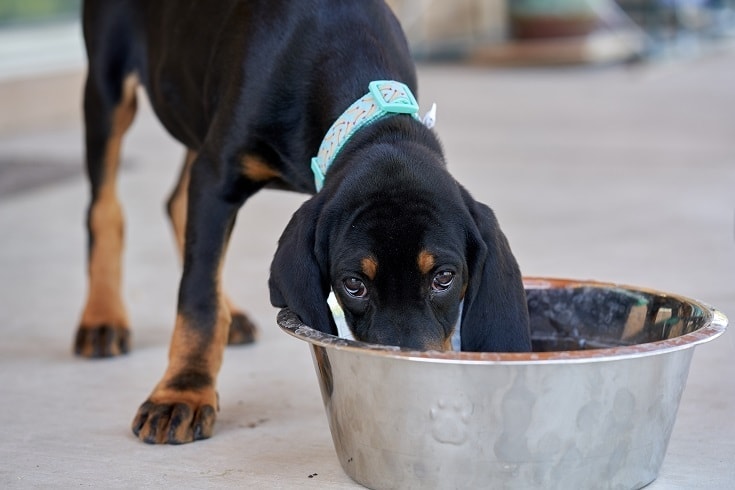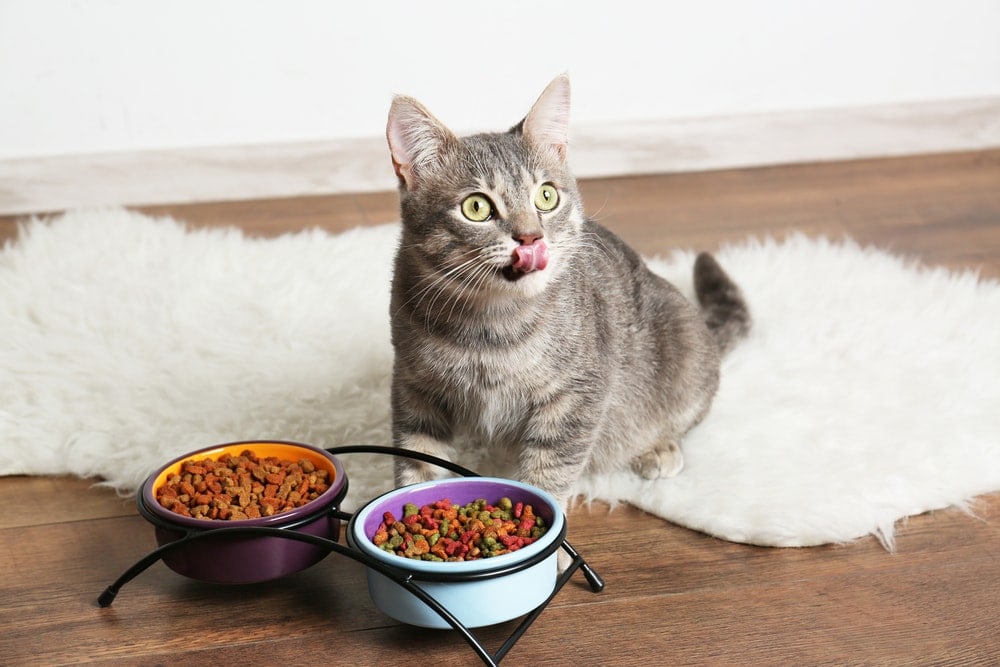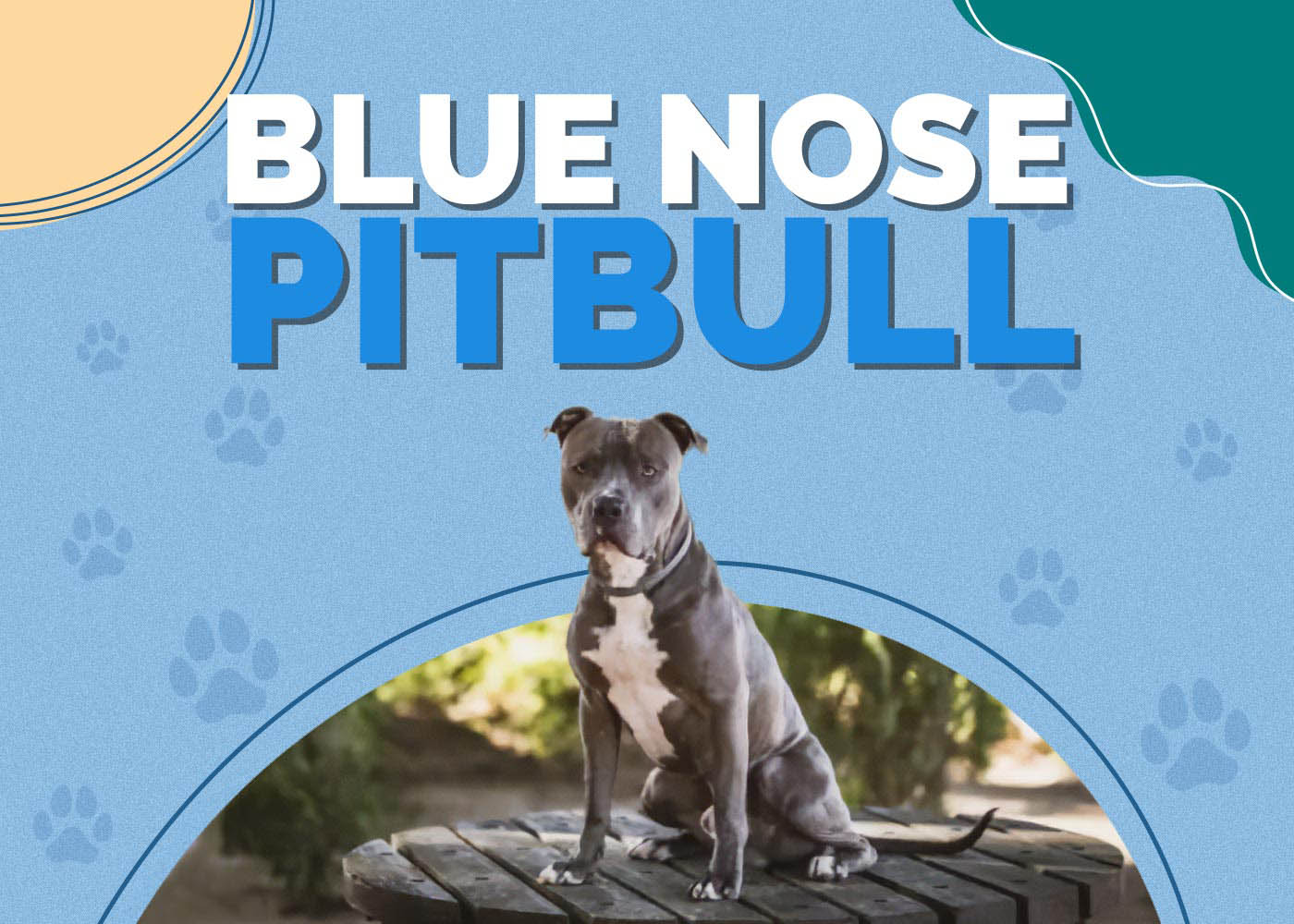How to Hydrate Your Cat: Food & Water Advice
Updated on
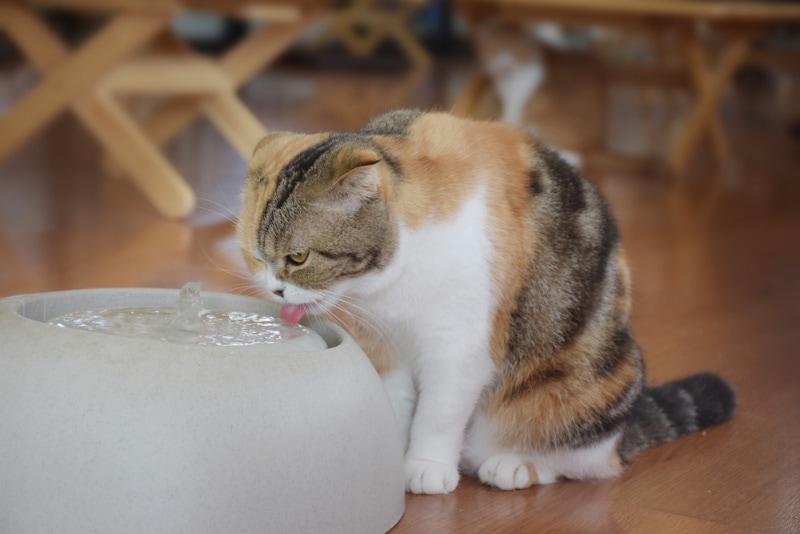
Click to Skip Ahead
Just like any animal, cats absolutely need proper hydration. However, cats in the wild would get much of their hydration from prey animals. When they are eating the diets we give them, this often makes it challenging for them to reach their hydration needs. Many felines end up with UTIs and kidney problems because of their poor hydration levels.
Luckily, there are a few ways to help your car stay hydrated, and most of them aren’t challenging.
Understanding Cat Hydration Needs
Before you can start helping your cat get hydrated, it is important to have an estimate of how much water your cat needs in a day, as well as whether or not your feline is dehydrated. Cats do not necessarily need as much water as us, as they are relatively small.
Exactly how much water your cat needs can also vary. If you feed your cat wet food, they may need very little water. However, cats that eat dry food often need to drink much more. More active cats, such as those that engage in frequent play or outdoor exploration, will generally need more water to stay hydrated. Of course, hotter weather conditions also lead to an increase in water intake.

Signs of Dehydration
An easy way to determine if your cat is getting enough water or not is to look for signs of dehydration. This includes:
- Dry and sticky gums
- Sunken eyes
- Loss of skin elasticity
- Lethargy
- Decreased urine output
- Elevated heart rate
- Poor appetite
The 3 Ways to Hydrate Your Cat
1. Provide Fresh Water
One of the surest ways to provide your feline with the correct amount of water is to ensure they can access fresh water at all times. Cats are much more likely to drink when their water is appealing to them (and making their water “appealing” is often harder than it sounds).
Cleanliness is exceptionally important. Cats often won’t drink from dirty water; they will just get dehydrated instead. Regularly clean your cat’s water bowl or water fountain. Where the water bowl is can also be important, especially to some cats. Often, cats don’t like drinking near their food or litter box. You will need to place the water somewhere separate. It should also be in a quiet spot away from foot traffic, which may discourage cats from drinking.
Sometimes, cats can also be sensitive to the taste of the water. You can use clean tap water in most cases, but if your tap water has a strange taste, consider using a water filter. Of course, what you put the water in is also important. Most cat owners choose a water bowl, which works great for most cats. However, other cats may prefer running water. In this case, we recommend a water fountain.
If you do select a water fountain, be sure to change the filter regularly. Otherwise, the taste and flow of the water may be affected.
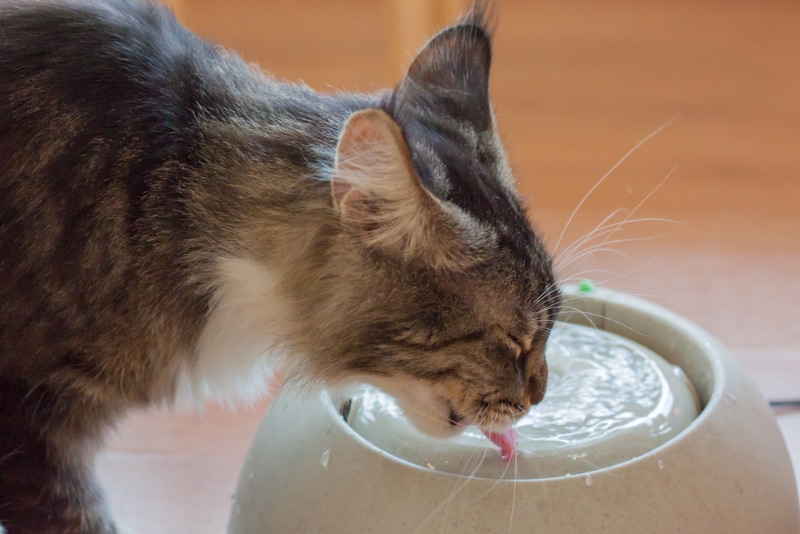
2. Wet Food vs. Dry Food
While the focus is usually on water, what you feed your cat plays a huge role in their hydration. Wet food is especially high in water, while dry food is not. The high water content in wet food can contribute to your cat’s overall hydration and is often necessary for cats with underlying health conditions. Wet food is also better for cats in general, as it provides the hydration they need.
Dry food does still have its place, though. It can be left out, which may be important for some pet parents. It also tends to be much cleaner, especially if your cat tends to be a messy eater. It’s also less expensive and more nutrient-dense.
In the end, the food you choose largely depends on your needs. Some cats absolutely need to have wet food, but others can be perfectly fine on dry food if that works better for you. To strike a balance between the benefits of wet and dry cat food, some cat owners choose to combine both types in their cat’s diet. This provides the advantage of added moisture from wet food while still benefiting from the convenience and dental health advantages of dry food.
That said, it’s important to still maintain the correct calories when combining foods. Many cat food brands include combined feeding guidelines on the containers of their food, as this is a very popular method.
While providing our feline companions with high-quality food is paramount, selecting the right food and water bowl is equally important. The modern yet practical design of our Hepper NomNom Cat Bowl combines cat-catered features, like whisker-friendly shallow dishes and slight elevation, with a contemporary style aimed at protecting your floors from messy eating and drinking. The NomNom is entirely dishwasher safe and was thoughtfully created with your cat’s health and well-being in mind.
3. Encourage Hydration
You should also do your best to encourage hydration. Sometimes, even if you follow all the steps above, your cat just needs a little extra push to prevent dehydration. Just because water is available doesn’t mean your cat will drink enough to avoid health problems.
Here are some ways to encourage hydration:
- Multiple Water Sources: Try adding more than one bowl of water around your home. Your cat may be more likely to drink if they have easy access to water as opposed to needing to walk to the other side of the house. Plus, it provides your cat with options.
- Clean Bowls: Always keep bowls extra clean. You should completely rinse and refill the bowls daily, with a deep clean once a week.
- Running Water: Many cats prefer to drink from flowing water. Therefore, sometimes a water fountain is simply the best choice.
- Bowl Material: Some cats do not like certain bowl materials. For instance, stainless steel is easy to keep clean and highly recommended, but some cats with ID tags do not like the noise that commonly occurs when they take a sip.
- Water Temperature: Cats are picky creatures, and sometimes, this extends to the temperature of their water. You may need to add ice cubes or other mechanisms to help keep the water cool between water changes.
- Flavor Infusions: As a last resort, vets sometimes recommend adding flavoring to a cat’s water to encourage drinking. Usually, only those with underlying health issues need to drink so much more than this is called for, though.
If you want to encourage your cat to drink more water, a great cat water fountain can be just the thing.
Our Hepper Stainless Steel Cat Water Fountain has a minimalist, modern design, advanced triple filtration, and adjustable water flow. This fountain is quiet, sturdy, and easy to clean, making it a low-fuss addition to your home.
Conclusion
Cats often don’t tend to drink much fresh water. In the wild, they would get much of their hydration from their prey, which means they would need to drink less water. In our homes, this approach does not always work out well, though.
On top of providing your cat with fresh water, you may need to take other steps to encourage them to drink. What one cat likes may differ greatly from another, so you’ll likely need to try a few methods before you notice a difference. It may be necessary to add wet food to your cat’s diet in some cases, as these recipes are often over 75% water.
With all that said, if your cat seems to be suddenly dehydrated, but you haven’t noticed a difference in their drinking habits, make an appointment with your vet. Sometimes, dehydration can be a sign of something more serious going on.
Featured Image Credit: rotchana tossa, Shutterstock



